Trains have been part of my life. But forget me – trains are inextricably woven in the American story. Starlight on the rails and The Wabash Cannonball and The Orange Blossom Special and The Tulsa Queen. The Golden Spike at Promontory, Utah, in 1869.
John Henry, fact and myth and legend, in the 1870s:
Hobos on trains in the Great Depression:
Trains were a part of Berkeley, very much so, until the 1940s and 1950s. The Key System rain down Shattuck, with Shattuck Square as a central train station.
The station is gone, but the division in Shattuck remains. On University Avenue was the Santa Fe station:
It was became a restaurant – the Santa Fe Bar and Grill – and then became a school, the Berkeley School.
 The school still uses the name “depot” for the depot building. It is next to a synagogue that was a Jay-Vee liquor store.
The school still uses the name “depot” for the depot building. It is next to a synagogue that was a Jay-Vee liquor store.
The Southern Pacific Station is still standing:
It is now Brennan’s restaurant. It was empty a long time before being converted into the China Station restaurant in 1974.
Twenty-years-plus later it became Xanadu, a fusion Asian estaurant. And then Brennan’s. So we still have some hint of railroad among us.
A slightly tangential part of train history involves our neighbor, Emeryville. The huge freight yards and Key System facilities that once dominated Emeryville’s landscape have been largely replaced by Bay Street, Ikea, etc.
Trains played a different, non-traditional role in our history in Berkeley – namely the efforts led by the Vietnam Day Committee to block troop trains on the Santa Fe tracks in 1965:
In 2014, protests against police killings of unarmed black men blocked the tracks.
In 2014 the trains stopped. They didn’t in the 1960s – or in the 1980s in Concord
An early common ancestor of Quirky Berkeley was a list of Things that I Love About Berkeley. One thing I loved/love is the sound of trains at night. Trains are among us. We hear them, we see them, and sometimes trying to get across Gillman we wait for them.
 Which brings us to material culture of the railroad variety. I don’t have a lot, but it makes me happy.
Which brings us to material culture of the railroad variety. I don’t have a lot, but it makes me happy.
Any discussion of trains as material culture in Berkeley simply must begin with the Redwood Valley Railway in Tilden. It was established in 1952 by Erich Thomsen. Rides cover 1.25 miles of track and last about 12 minutes. The railroad uses 5-inch scale live steam locomotives on a 15-inch narrow gauge track. It is one of my favorite things.
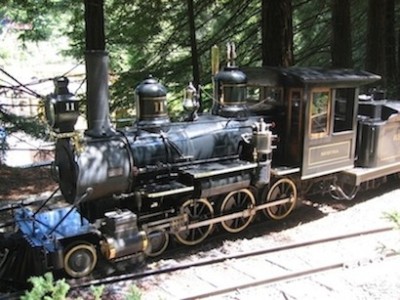 Here is a photo from 1983. My son Jake was two then. He had an insatiable passion for all things trains that year. Soon he moved to Star Wars and then to baseball, but trains were his deal.
Here is a photo from 1983. My son Jake was two then. He had an insatiable passion for all things trains that year. Soon he moved to Star Wars and then to baseball, but trains were his deal.
Adjacent to the Redwood Railway is the layout for the Golden Gate Live Steamers. How quirky are they and how quirky are their trains and tracks and buildings and passion?
The Golden Gate Live Steamers is a non-profit that operates a large scale miniature railroad, Facilities include 7.5″, 4.75″ dual-gauge ground level track and a high track loop consisting of 4.75″, 3.5″ and 2.5″ triple-gauge track. You see them just below the Redwood Railway station, down the hill.
Here is a photo from their website that gives a sense of what they are about.
Look at this quirk from the old days. It lingers.
The club started in basements and went outside in 1951 in the Redwood Canyon Regional Park in Oakland, where it stayed until 1966.
The Tilden layout was built in the early 1970s.
That makes 40+ years in Tilden. Who knew? It grows. You can ride the little trains on Sundays 12-3. Usually. That is a lot of quirk!
It is a natural progression, don’t you think, from here to model trains in public view in Berkeley?
And for that we of course go to Ace Hardware at 2145 University:
Breaking the rules for just this one moment just this one time, looking inside:
Staying with model trains in public view, and not breaking any rules but staying outside, there are the trains in the window at Kutz for Kids at 1752 Solano:
From model railroads it’s off to railroad yard scenes. Or scene, singular. All I found so far, but it is a good one:
This next photo isn’t exactly a train, although it did run on tracks in a foundry or a mine or some other industrial setting. Maybe that makes it by definition a train.
A Quirky Berkeley reader in San Mateo saw this Poe Street photo and sent me this look-alike:
Pretty close.
Nothing really spectacular so far, right? I am prepared for that criticism. But there is one more.
Who among us, if we are honest, has not wanted a caboose in their backyard? Who has not wanted to sleep on a caboose? Or have their office in a caboose? Well, somebody has:
This photo by Waymarketing.Com shows the caboose shortly after arrival.
I am sorry (figure of speech), but this is
I went to find my friend and show him my train photos. He was immersed in watching “Bimbo’s Initiation.”
This is a surreal, dark, nightmare. Wow! What were they drinking in 1931 when they made this? In any event, he was fine with stopping the cartoon and looking at my pictures. He said he’d watched it eight times in a row. The Berkeley train pictures?



























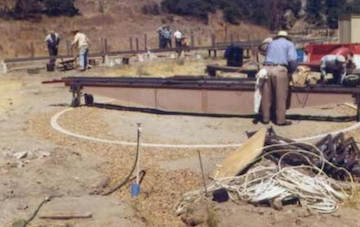
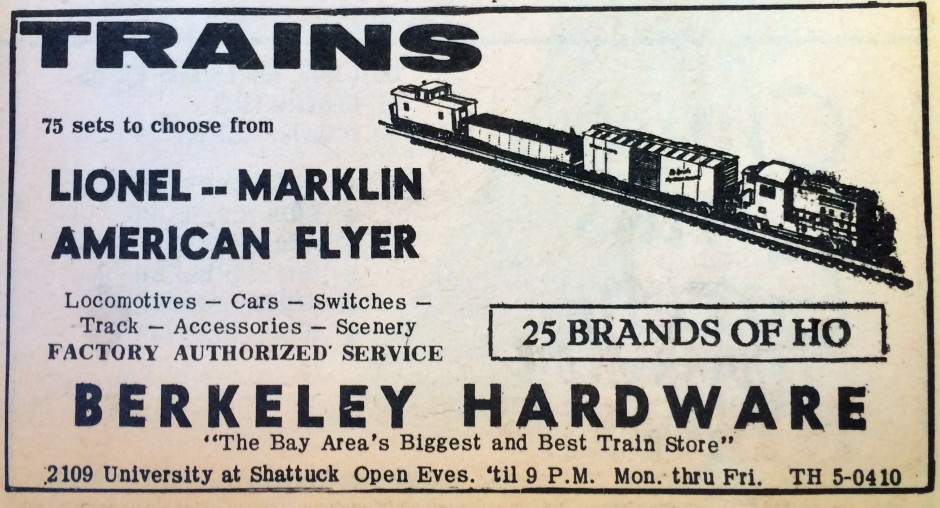
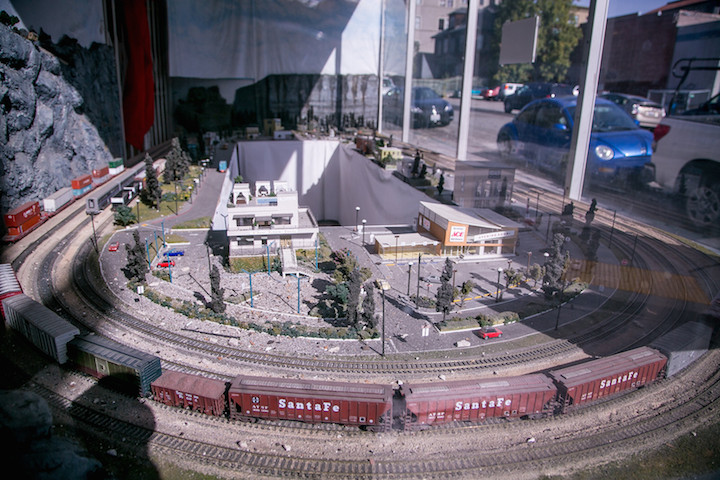








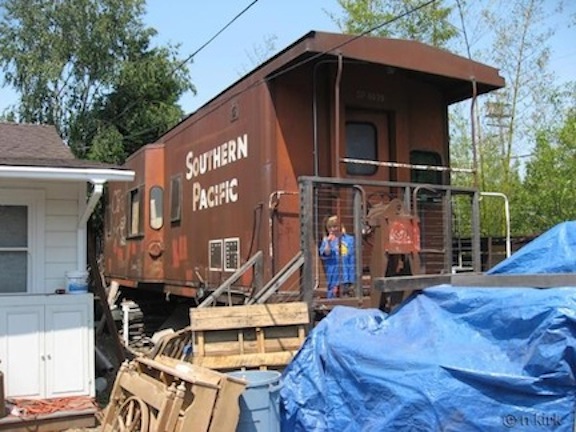
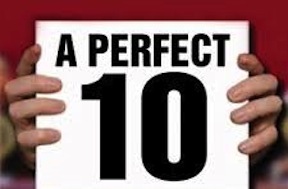





Really enjoyed all the Photos , David hooper Azusa, Calif. (Pasadena)